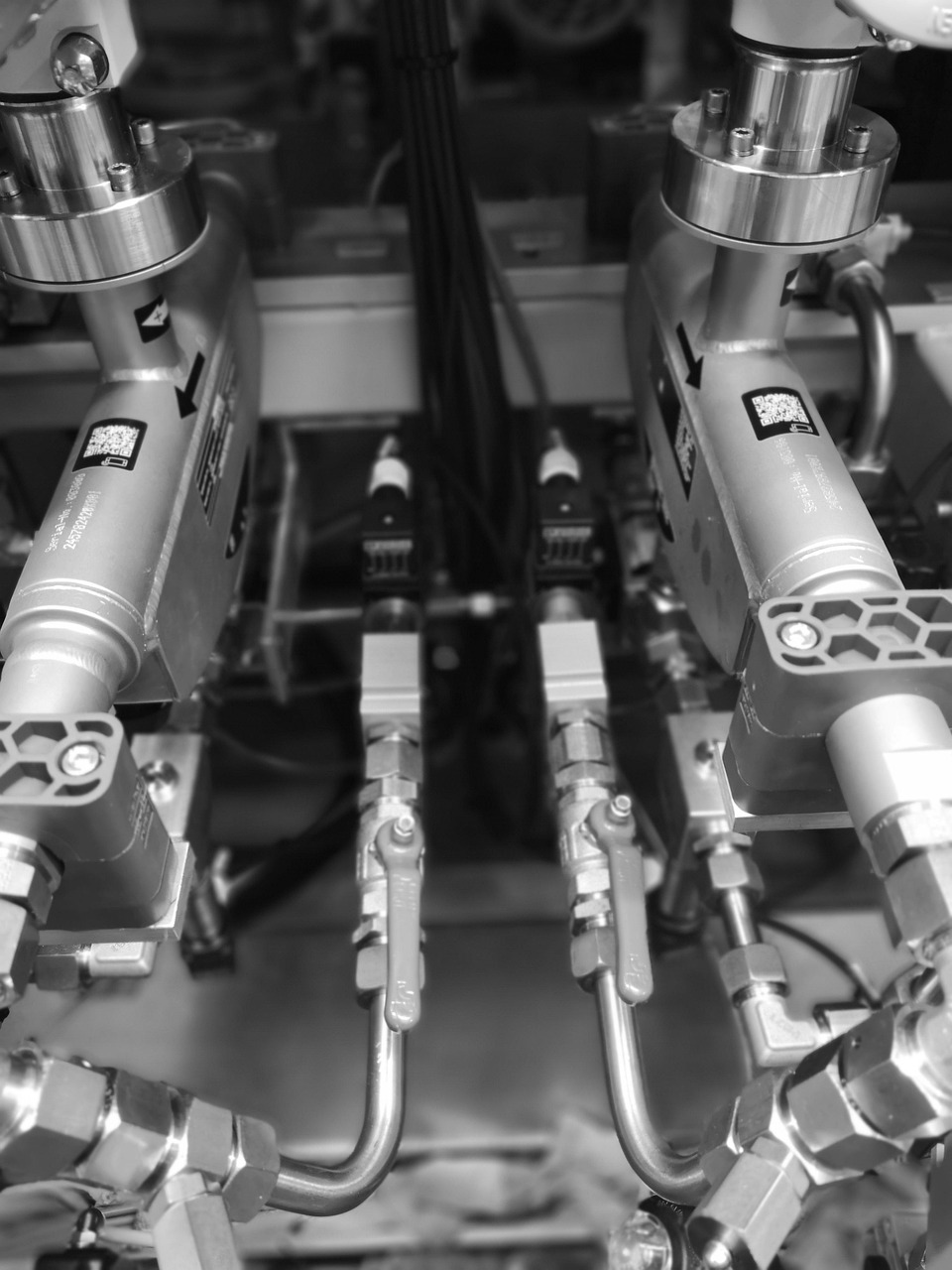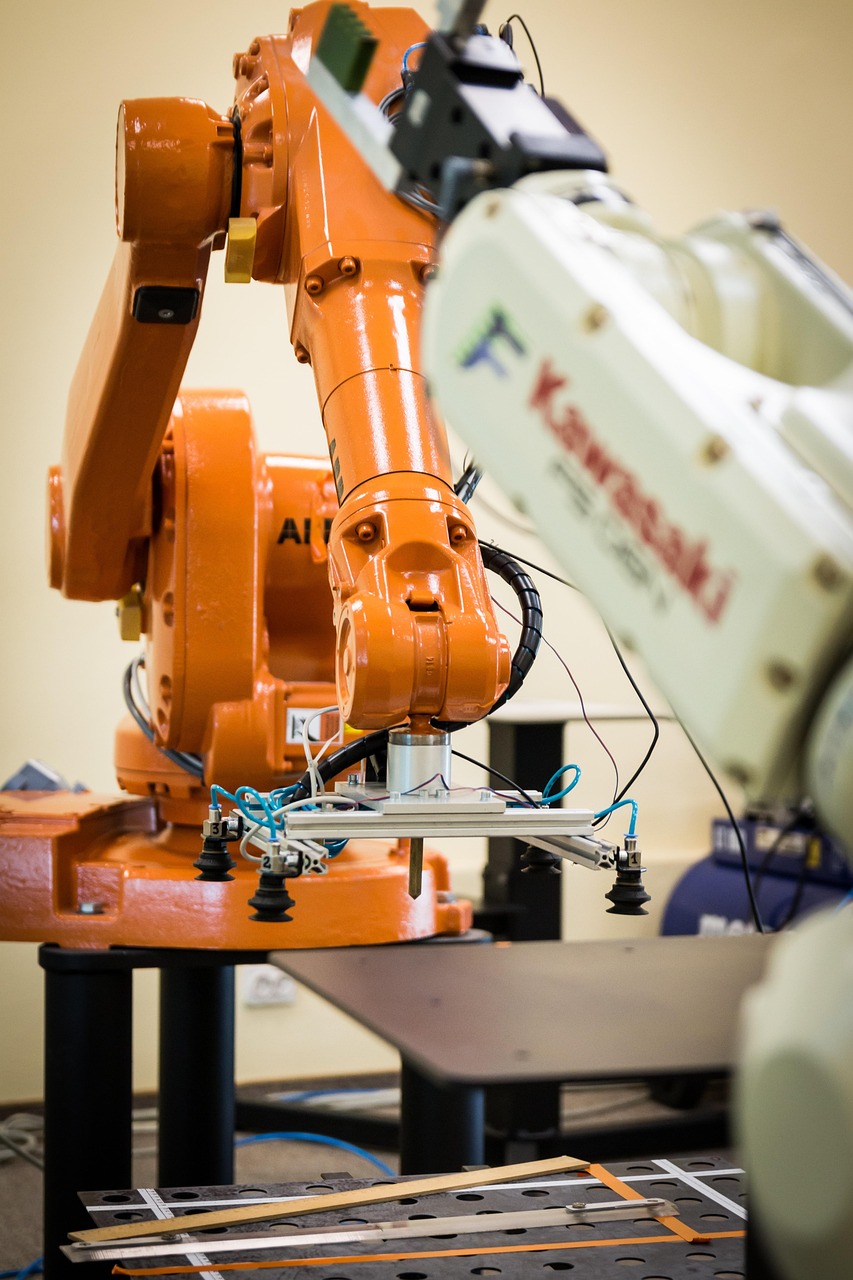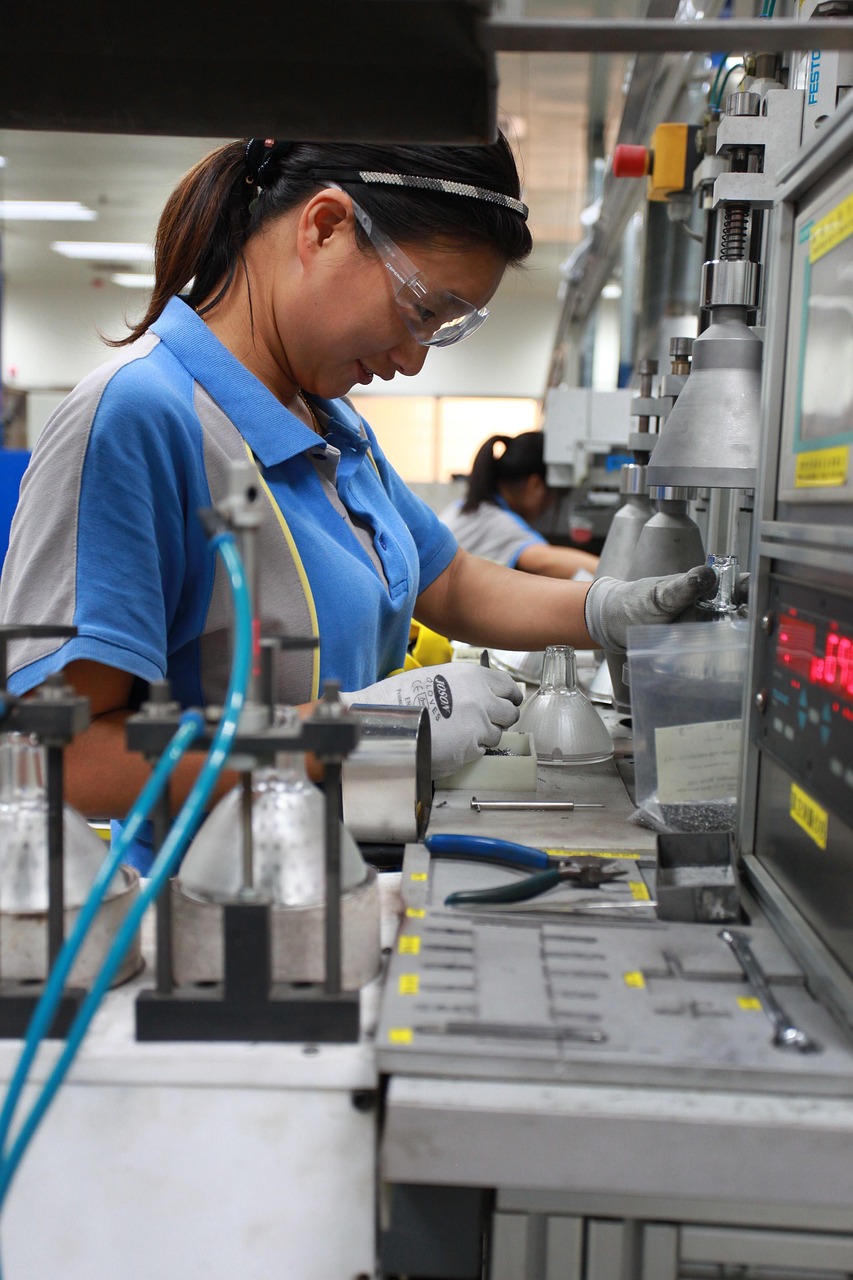Transforming Industrial Automation Together
Join us at the forefront of factory automation and emerging technologies through insights and innovations shared at the ETFA conference series.
Discover the Legacy of ETFA Conferences in Automation
Connecting academia and industry to showcase advancements in factory automation and explore groundbreaking technologies since 1992.



Our Mission and Vision
ETFA Industrial Blog serves to bridge the gap between research and practical applications in industrial automation technologies.
We aim to foster collaboration among researchers and practitioners worldwide.
Our Services
Leading Expertise in Industrial Automation


Join the Innovation Movement
Connect with experts and stay updated on the latest trends in factory automation and emerging technologies.
Why Choose Us
Unmatched Expertise and Insights

Expert Speakers
Experience presentations from leading experts and researchers in industrial automation at every conference.
Cutting-Edge Research
Access high-quality research papers that shape the future of factory automation and related technologies.
Global Networking
Build connections with industry leaders, researchers, and practitioners from around the world.
What Our Attendees Say

John Smith
Founder
The ETFA conference opened new horizons for my research and collaborations.

Emily Johnson
Founder
I thoroughly enjoyed the insights from industry leaders at the conference.

Michael Brown
Founder
A brilliant platform for networking and discovering new technologies.
Stay Ahead in Industrial Automation Today
At ETFA Industrial Blog, we present the latest research and trends in factory automation, bridging the gap between innovation and real-world applications.
- From Sensors to Systems: The Anatomy of a Smart Factory작성자: miky chan
The term “smart factory” is everywhere — in whitepapers, boardrooms, and even government policy. But what does it actually mean? At its core, a smart factory is not defined by a single piece of hardware or software, but by its interconnected layers that work in unison to drive autonomy, efficiency, and innovation.
Let’s break it down.\
1. The Sensor Layer: Capturing Reality
At the foundation of every smart factory lies a vast network of sensors — devices that monitor temperature, vibration, pressure, humidity, and motion. These sensors act as the eyes and ears of the system, providing the raw data necessary for intelligent decision-making.
Today’s factories use IoT-enabled sensors with wireless communication, self-calibration, and built-in diagnostics. These devices feed continuous streams of information to edge or cloud-based systems for analysis and action.
2. The Communication Layer: Seamless Data Transfer
Data must travel quickly and securely. That’s where industrial communication protocols like EtherCAT, Profinet, and OPC UA come into play. Combined with Time-Sensitive Networking (TSN), these technologies ensure that sensor data reaches processing units with minimal latency and maximum reliability.
Wireless protocols — including 5G, Wi-Fi 6, and LoRaWAN — are also gaining traction, especially for remote areas or mobile assets like AGVs (Automated Guided Vehicles).
For more on industrial communication trends, see OPC Foundation and TSN on IEEE.
3. The Processing Layer: Intelligence at the Edge
Once data is collected, it must be interpreted. The processing layer uses edge devices, industrial PCs, and cloud platforms to analyze, filter, and act on data in real time.
In high-speed production environments, edge computing is often preferred. For example, vision inspection systems use AI algorithms on-site to detect defects within milliseconds, without relying on cloud latency.
Systems like AWS IoT Greengrass, Siemens Industrial Edge, and Rockwell’s FactoryTalk are leading the movement toward distributed intelligence across the factory floor.
4. The Control Layer: Coordinated Execution
Control logic is the brain of the operation. Here, PLCs, DCS, and SCADA systems execute real-time commands based on sensor input and algorithmic logic.
Modern control systems are increasingly modular, software-defined, and adaptable. They’re built to integrate easily with MES (Manufacturing Execution Systems), enabling real-time feedback loops and automated quality adjustments.
5. The Application Layer: Human-Centric Interfaces
This is where humans interact with the system. Dashboards, analytics platforms, and mobile HMIs provide visibility into operations and allow operators to monitor KPIs, diagnose issues, or change parameters.
Smart factories often feature augmented reality (AR) overlays, predictive analytics dashboards, and custom alert systems to simplify complex data for human understanding.
🧠 Putting It All Together
These five layers — Sensors, Communication, Processing, Control, and Applications — work together to transform traditional factories into adaptive, intelligent systems.
Instead of simply executing pre-programmed tasks, smart factories can:
- Predict equipment failure before it happens
- Optimize energy consumption dynamically
- Adjust production in real-time based on supply and demand
It’s this synergy — the integration of technology across layers — that defines true smart manufacturing.
At ETFA Industrial Blog, we aim to break down these systems into digestible insights, helping you understand not just the what, but the how behind next-gen automation.
Stay with us as we explore each component in detail in upcoming articles.
- Top 5 Trends Driving Industrial Automation in 2025작성자: miky chan
Top 5 Trends Driving Industrial Automation in 2025
Industrial automation is entering a new era — one defined not just by speed and efficiency, but by intelligence, adaptability, and connectivity. As factories worldwide strive to become smarter, more autonomous, and more resilient, several key trends are shaping the direction of this transformation.
At ETFA Industrial Blog, we identify the most impactful developments in the field. Here are the Top 5 trends driving industrial automation in 2025, based on technological advancements, industry reports, and our ongoing conversations with experts.
1. AI-Powered Industrial Intelligence
Artificial Intelligence (AI) is no longer a futuristic concept — it’s being deployed on factory floors today. From anomaly detection in production lines to predictive maintenance of CNC machines, AI is enabling factories to make data-driven decisions in real time.
Industrial AI combines deep learning, computer vision, and pattern recognition to optimize processes, reduce waste, and improve product quality. For example, machine learning models can now analyze sensor data to anticipate equipment failure days in advance, helping reduce unplanned downtime.
A 2024 McKinsey report predicts that AI-enabled factories can increase productivity by up to 30% by 2025. The question is no longer “if” AI will be adopted — but how fast and how far.
2. Edge Computing for Real-Time Control
Traditional automation systems rely heavily on cloud-based data processing. But in many real-world environments, latency, security, and bandwidth limitations make cloud-only solutions impractical. That’s where edge computing comes in.
Edge devices — such as intelligent PLCs, IIoT gateways, or micro data centers — process data locally at or near the source. This allows faster response times for tasks like robotic arm control, machine vision-based inspection, and safety shutdowns.
In 2025, we’re seeing a growing convergence between edge computing and AI — often referred to as Edge AI. Solutions like NVIDIA Jetson, Siemens Industrial Edge, or Rockwell Automation’s FactoryTalk Edge enable real-time analytics and control directly at the device level.
With cybersecurity also in focus, localizing sensitive data through edge computing provides an additional layer of protection against external threats.
3. Digital Twins and Virtual Commissioning
Digital twins are virtual representations of physical systems that mirror real-time status, behavior, and performance. In the manufacturing world, this means having a live 3D simulation of machines, processes, or even entire production lines.
Why is this important? Because it allows factories to:
- Simulate process changes before implementing them
- Detect potential failures in advance
- Reduce commissioning time during system upgrades
By 2025, digital twins are becoming more accessible through platforms like Siemens NX, PTC ThingWorx, and Dassault Systèmes 3DEXPERIENCE. Coupled with VR/AR visualization, operators can interact with systems before they’re even built.
Virtual commissioning also saves companies both time and cost during new production line rollouts. According to a recent Gartner study, more than 75% of industrial companies will use digital twins in some capacity by 2025.
4. Unified Communication Through Open Standards
In modern factories, machines, sensors, and controllers come from a variety of vendors. For years, this diversity created integration nightmares. But now, open communication standards are solving the interoperability problem.
Protocols like:
- OPC UA (Open Platform Communications Unified Architecture)
- MQTT (Message Queuing Telemetry Transport)
- TSN (Time-Sensitive Networking)
…are becoming the backbone of smart industrial networks. These standards enable seamless data exchange across different systems, regardless of manufacturer or platform.
In 2025, interoperability is not just a nice-to-have — it’s essential. As factories scale and evolve, using open standards reduces vendor lock-in and future-proofs the automation ecosystem.
The OPC Foundation and Industrial Internet Consortium continue to push for wider adoption and standardization across industries.
5. Human-Machine Collaboration, Not Replacement
One of the most misunderstood aspects of automation is the idea that machines are replacing humans. The reality is more nuanced. In 2025, we’re seeing the rise of Human-Machine Collaboration (HMC) — where humans and machines work together as partners.
Examples include:
- Cobots (collaborative robots) working safely alongside workers
- AR-assisted maintenance that overlays digital instructions onto physical machines
- Voice and gesture interfaces that allow intuitive machine control
Rather than displacing labor, HMC is enhancing worker capabilities, especially in dangerous or repetitive tasks. Companies like Universal Robots, ABB, and KUKA are leading the way with affordable and flexible collaborative systems.
Moreover, industrial UX (User Experience) is becoming a core focus — with dashboards, mobile HMIs, and real-time alerts designed for ease-of-use, even by non-technical staff.
🔚 Conclusion: The Smart Factory of 2025
The industrial automation landscape in 2025 is being reshaped by intelligence, integration, and collaboration. AI is delivering smarter decisions, edge computing is bringing speed to the edge, and digital twins are offering clarity before action. Open protocols are making ecosystems more flexible, while human-machine collaboration is building safer, more adaptive work environments.
At ETFA Industrial Blog, our mission is to explore these developments, contextualize them with real-world examples, and help professionals make informed decisions for their automation journeys.
Whether you’re a systems integrator, plant manager, or researcher — staying on top of these trends will give you a competitive edge in an increasingly connected world.
- What is ETFA? Tracing the Legacy of a Global Automation Conference작성자: miky chan
When we talk about the evolution of industrial automation, one name consistently stands out: ETFA — the International Conference on Emerging Technologies and Factory Automation. Since its inception in 1992 under the IEEE Industrial Electronics Society, ETFA has served as a critical platform for researchers, engineers, and innovators to explore the next frontier in automation, control, and intelligent systems.
The 2016 edition, hosted in Berlin, marked a pivotal point in the history of the conference. It focused heavily on the convergence of IT and OT — showcasing developments in OPC UA, edge computing, cyber-physical systems, and real-time industrial communication protocols. What was once considered experimental is now a foundational part of today’s smart factories.
You can still explore the official IEEE record of the 2016 conference proceedings via IEEE Xplore – ETFA 2016.
At ETFA Industrial Blog, our goal is to carry forward this mission — not only by honoring the legacy of the original ETFA conferences but also by translating complex academic research into real-world industrial insights. We serve as a bridge between universities, labs, and factory floors, making automation knowledge accessible and actionable.
From deep dives into machine learning applications in production lines to field-level industrial Ethernet trends, this blog will explore the key technologies driving the next generation of automation. Whether you’re a researcher, engineer, or tech-curious reader, our content will keep you connected to the pulse of industrial innovation.
Stay with us as we build on the past to illuminate the future — one insight at a time.